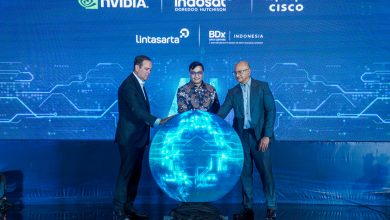Shifting Left: The Vital Role of DevSecOps in Modern Development

by Mark Troester, VP of Strategy, Progress

As we live in an ever-changing digital world, DevOps has opened a vital new dimension: security integration. While businesses are compelled to develop products and solutions faster and more flexibly, moving security and compliance left in the DevOps pipeline has become a necessity. Development teams are more likely to use automated tools for executing security services, understanding that potential security problems should be identified and removed as early as possible.
This shift-left approach to security and compliance is the basis of DevSecOps. As a result, developers can identify and fix coding problems through automated security and resource planning tests. Due to the increasing importance of this approach to development, the Asia Pacific DevSecOps market is expected to grow at a CAGR of 24.2% from 2021 to 2027, KBV Research revealed.
Facing the challenges of implementing security at late stages, development team leaders are focused on finding the most reasonable method of incorporating security precautions throughout the entire development process. Recognising that DevOps is a blend of people, culture, processes, and technology, it is vital to choose the appropriate technological framework for shifting security left and preserving continuous compliance.
The Intrinsic Nature of Security in DevOps
Although DevOps has always been seen as the combination of application development and IT operations, security can no longer be ignored as a vital aspect of the equation. Microsoft’s research reveals that more than 80% of ransomware attacks occur due to prevalent configuration faults in software and devices. This indicates that configuration management is intrinsically linked with DevOps, DevSecOps, security, and compliance.
Challenges in Implementing DevSecOps
While DevSecOps offers numerous benefits, its implementation can present challenges. If not managed properly, it can pressure developers and potentially hinder organisational progress. Standalone security approaches often slow down the production process by introducing late-stage security reviews, leading to frustration and increased costs.
The Scale Factor
The development of modern enterprise activity increases difficulties in the implementation of security measures. Today’s tech ecosystems are characterised by multi-cloud systems, diverse device types, and a range of geographical locations. The increased complexity of using container and service-oriented application methods further complicates the issue, as does the need to follow a range of compliance and security standards.
In terms of the security process, DevSecOps is central to organisations that practice the Zero Trust approach. It integrates security and compliance specialists into the DevOps process, ensuring greater configuration visibility and analytics. Automation ensures constant monitoring and remediation of configuration drift.
Practical Considerations for Effective DevSecOps
To facilitate the left shift of security in the software development lifecycle, the following practices should be considered:
- Adopting Continuous Compliance: Ensure that initial development configurations are correct and prevent them from drifting by continuously automating across all environments.
- Establishing a Human-Free Zone: Although humans are still in charge of developing the app, all routine actions should be automated. This way, human errors are reduced, and developers can focus on higher-level tasks.
- Implementing Automation at Scale: If the concept of Infrastructure as Code is extended to Policy as Code, there is no longer a need to manage security and compliance rules in spreadsheets. Instead, policies can be defined using human-readable, machine-enforceable code.
DevSecOps: Bolstering Security at Scale
The best practice of handling security earlier in development is no different, particularly when it comes to DevOps leaders. Policy-as-code enables DevOps teams to automate configuration management along with continuous policy checks and remediation. DevSecOps is one of the largest supporters of Zero Trust, making it more efficient. Blending a human-free zone with the policy-as-code model is breaking new ground. This approach means that when you implement security in this manner, it gets done without human intervention, becoming an integral part of your normal SDLC.
Embracing DevSecOps for Future Resilience
As the DevOps stage has developed drastically, security has become a fundamental need of the hour rather than merely a highly recommended guideline. The continued collision of development, operations, and security is going to redefine how software gets deployed in the future.
In an era of rapid change and transformation in the digital world, along with increased cyberattacks, shifting security to the left ensures development does not disregard a key element in delivering robust and intuitive applications.




